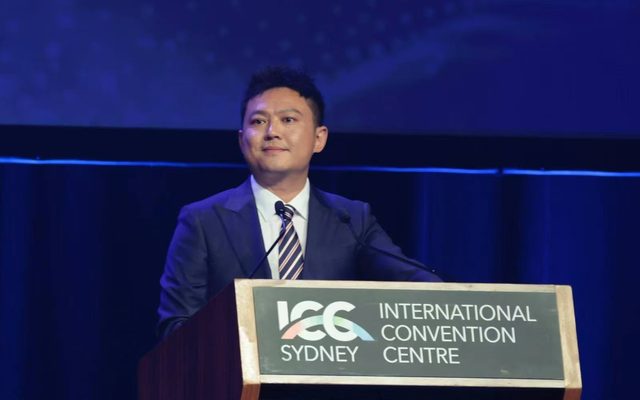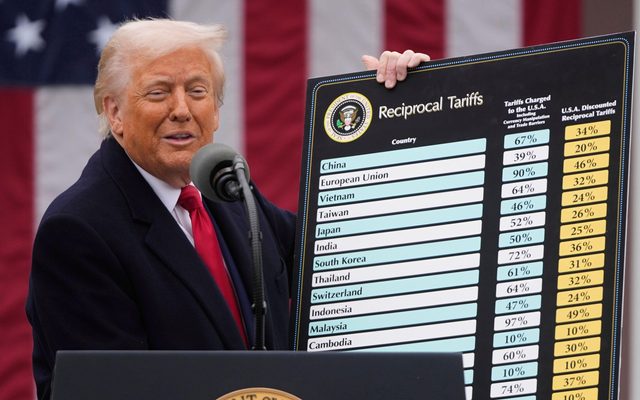This article is from the Australian Property Journal archive
BORROWERS have been given a reprieve with the Reserve Bank of Australia holding interest rates at 4.1% yesterday, but its governor Philip Lowe warned more rises could be on the way in its quest to bring down inflation.
Lowe said the four percentage point surge in interest rates since May last year, together with economic uncertainty, were the reasons for yesterday’s move.
“The higher interest rates are working to establish a more sustainable balance between supply and demand in the economy and will continue to do so,” Lowe said.
“The decision to hold interest rates steady this month provides the board with more time to assess the state of the economy and the economic outlook and associated risks.
“Some further tightening of monetary policy may be required to ensure that inflation returns to target in a reasonable timeframe, but that will depend upon how the economy and inflation evolve.”
Inflation remains high but eased to 5.6% in May, from 6.8% in April, and is below December’s peak of 7.8%. The RBA’s target is 2% to 3%.
Lowe also noted that growth in the Australian economy had slowed and conditions in the labour market have eased, although remain very tight, while wages growth has picked up in response to the tight labour market and high inflation.
“The combination of higher interest rates and cost-of-living pressures is leading to a substantial slowing in household spending. While housing prices are rising again and some households have substantial savings buffers, others are experiencing a painful squeeze on their finances. There are also uncertainties regarding the global economy, which is expected to grow at a below-average rate over the next couple of years.”
Economists surveyed by Bloomberg were split ahead of yesterday’s RBA meeting, with 14 looking for no change and 13 tipping a 0.25% hike.
“We think that the RBA has done more than enough on rates to slow the economy and bring inflation back to target,” said AMP Capital chief economist Shane Oliver.
“Rate hikes normally impact the economy with up to a one-year lag. This time around the lag has likely been lengthened thanks to savings buffers built up through the pandemic, the reopening boost and more than normal home borrowers locking in at 2% of so fixed mortgage rates in the pandemic. However, these protections are likely now wearing off particularly with many fixed-rate mortgages now resetting to mortgage rates that are two to three times their initial fixed rate.”
New research from Roy Morgan showed 1.43 million, or 28.8% of mortgage holders were “at risk” of ‘mortgage stress’ in the three months to May, prior to last month’s hikes. It’s the highest number of mortgage holders considered “at risk” since May 2008, while the proportion of mortgage holders considered “at risk” of mortgage stress in the three months to is the highest for 15 years since September 2011.
The RBA rising interest rates to 4.6% would put 29.9% of mortgage holders in the “at risk”. – a total of 1.528 million.
4.6% peak likely – economists
Oliver said continuing to raise rates from here will add to the risk of recession that AMP Capital already put at 50%, however, given still-high inflation, the still-tight labour market and the RBA’s still-hawkish guidance AMP Capital is allowing for rate hikes in August in September that would take the cash rate to a peak of 4.6%.
The ANZ holds a similar view. The major lender’s head of Australian economics said that with the April pause followed by back‑to‑back rate hikes in May and June, “we are reluctant to back away from our call of a 4.6% peak just yet”.
“When and whether we get to that level is a little more uncertain in the wake of today’s pause.”
Capital Economics’ Marcel Thieliant, head of Asia-Pacific, said the RBA’s statement was “a touch more dovish” than June’s.
“With the labour market still very tight, house prices rebounding strongly and unit labour costs surging, another 25-basis point rate hike in August still looks likely and we suspect the Bank will follow that up with another one in September,” he said, although he added yesterday’s decision suggests that interest rates may not rise all the way to 4.85% the firm had previously expected.
Oliver noted that at the August meeting, the RBA will have June quarter inflation data and a revised set of economic forecasts – which may include faster wages growth given the stronger-than-expected increase in minimum and award wages this year.
Canstar’s finance expert, Steve Mickenbecker said that with unemployment at 3.5%, wage pressure is “going to add fuel to inflation, and the Reserve Bank wants to be assured that we are not sucked into a wage-price spiral, extending the pain well into 2024 or 2025”.
CoreLogic research director, Tim Lawless said that despite rates holding firm in July, there could be some further dampening of the recent exuberance seen across housing markets, where values have generally been rising since March. CoreLogic’s Home Value Index for June showed a subtle easing in the rate of growth nationally, from 1.2% in May to 1.1% in June, which could be the first signs of some heat leaving the recovery trend.
“As more borrowers are exposed to higher interest rates, either via rising variable mortgage rates or the expiration of fixed rates, we are likely to see a progressive increase in mortgage arrears, albeit from record lows last year.”
The pause in rate hikes comes after the biggest interest rate hiking cycle since the late 1980s. While rates went up more in 1988-89, household debt-to-income ratios at the time were about one-third of current levels and inflation expectations were much higher and it took more to slow the economy down. However, the RBA went too far and tipped the economy into recession.




